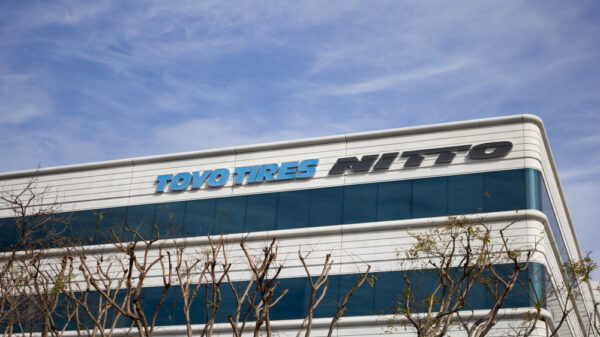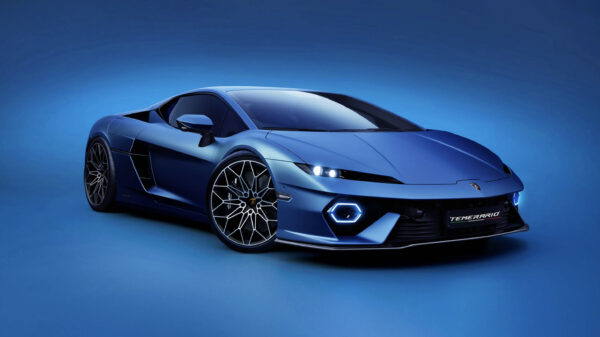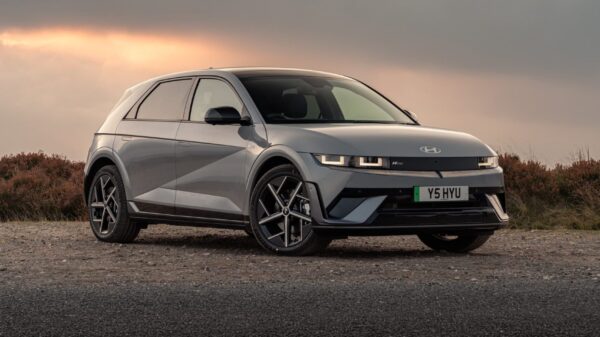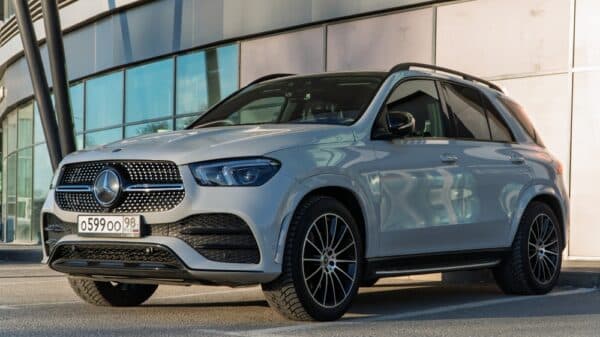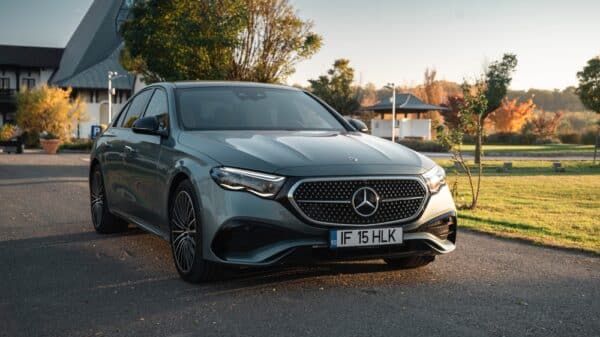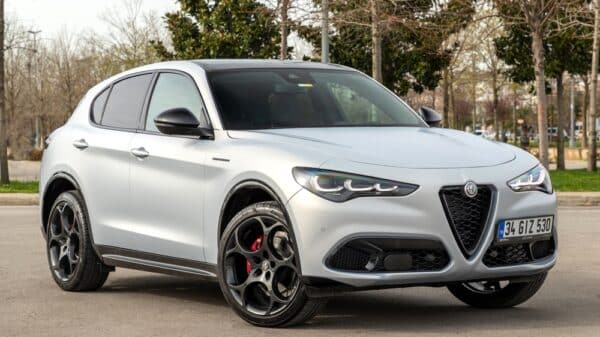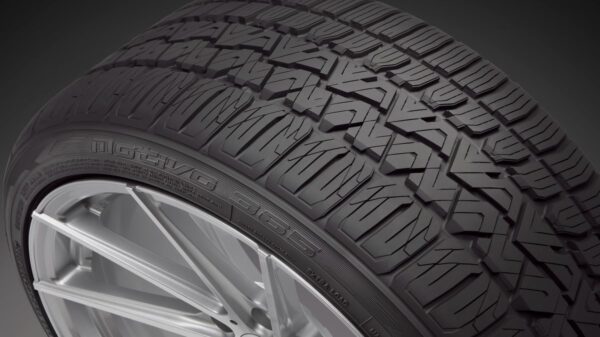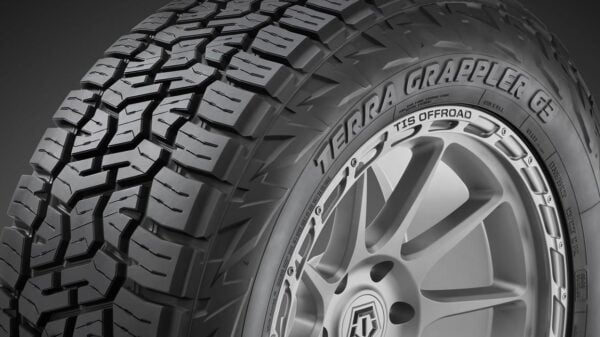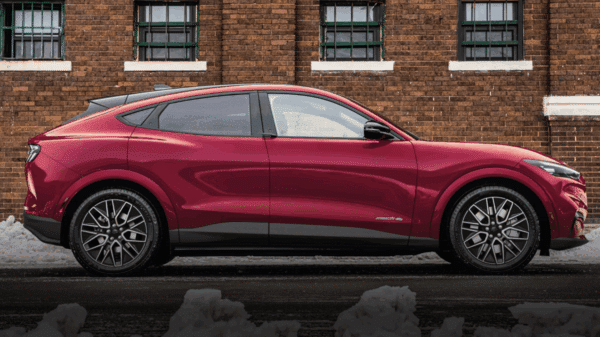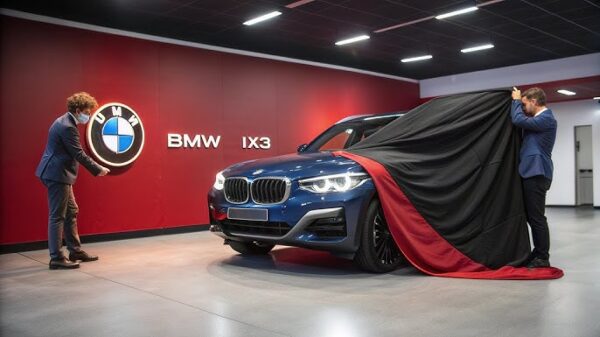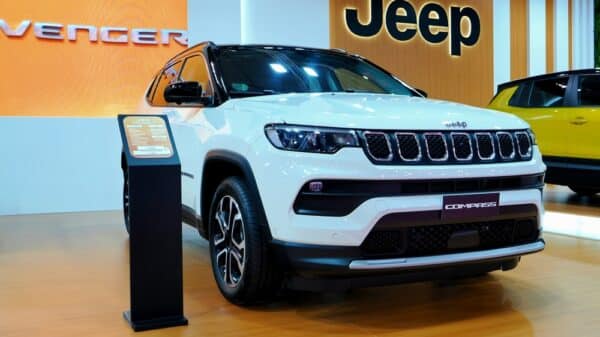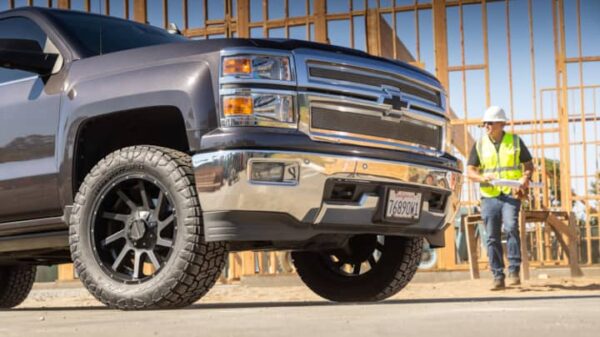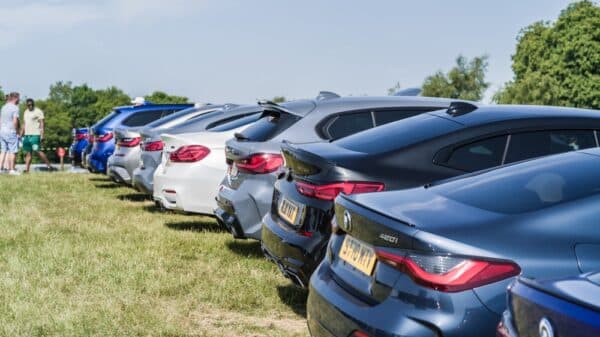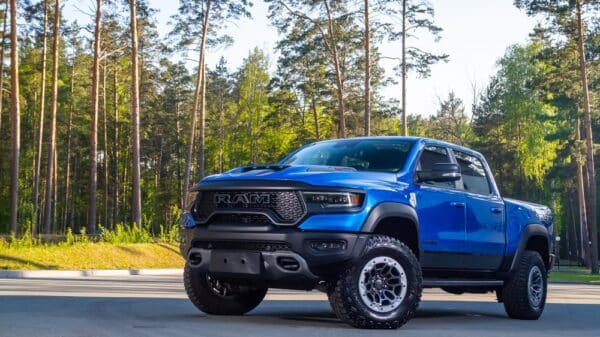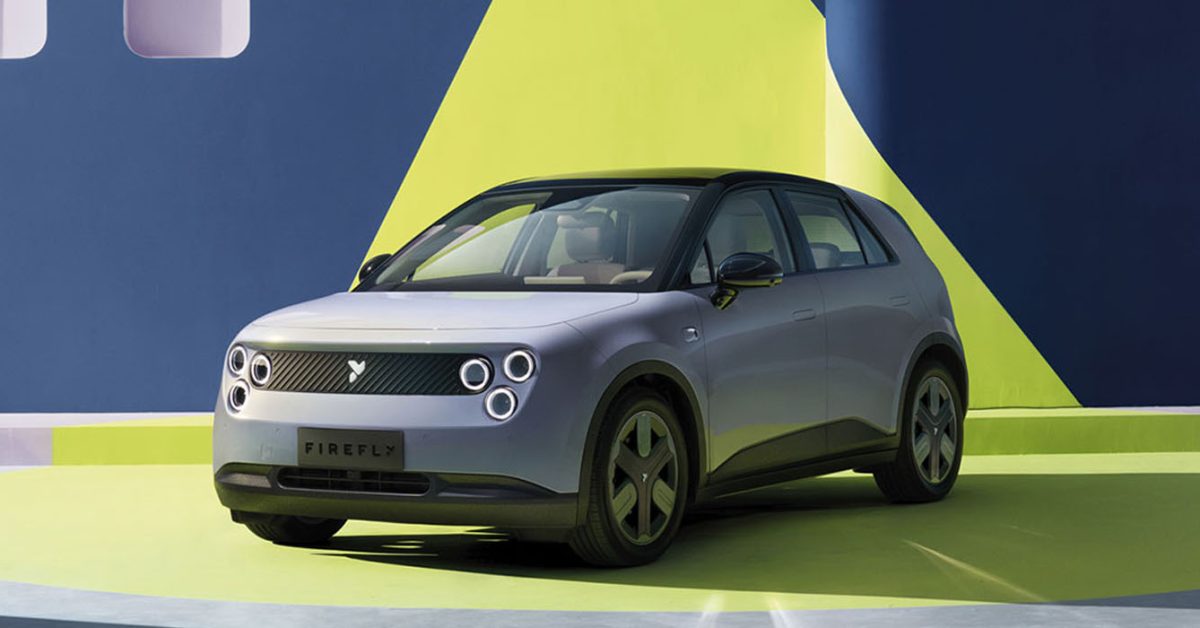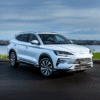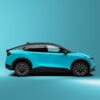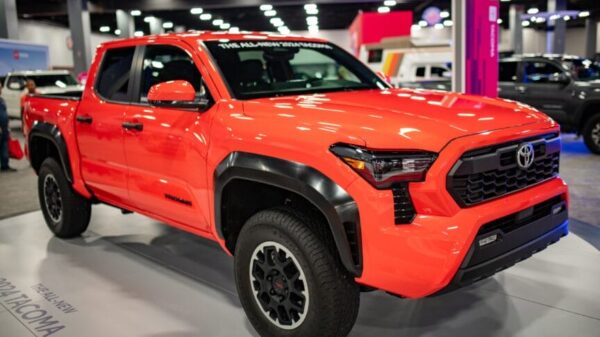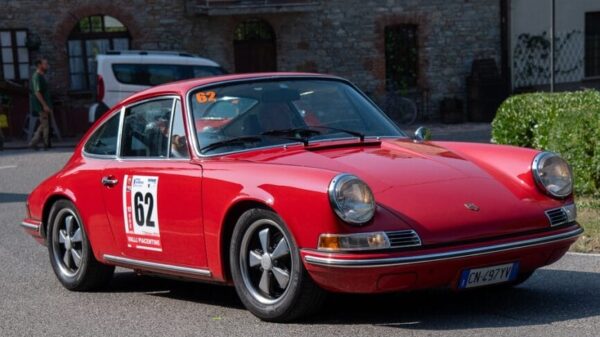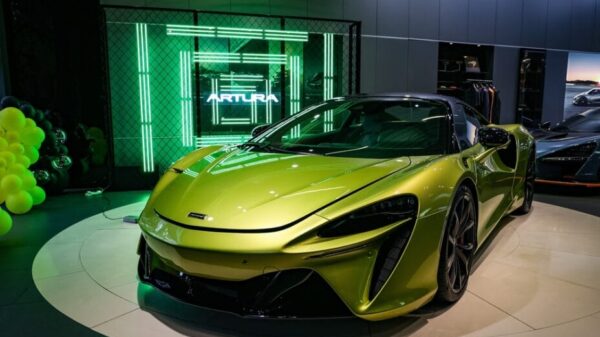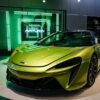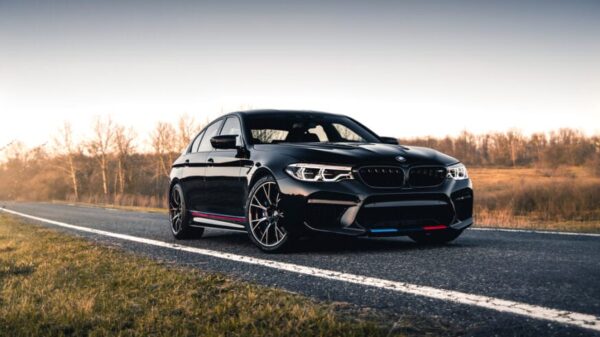I’ve been spending a lot of time in China lately, and each visit feels like a new chapter in an ongoing learning journey. The language barrier can be challenging, and I often find myself viewing things through an American lens, interpreting them in translation from Chinese to English. Yet, despite these hurdles, I’ve gathered invaluable insights that extend beyond mere observation.
For instance, it’s striking how the average Chinese car buyer mirrors American preferences more than European ones. Typically, they prioritize physical size and interior space, seeking vehicles that are value-packed and voluminous. You can witness this firsthand in the bustling streets of any Chinese city, where domestic sedans boast sizes comparable to our midsized vehicles, and towering crossovers are as big as a Honda CR-V or Toyota RAV4—regardless of whether they run on gas or electricity. These cars are designed for comfort, catering to those who’d rather enjoy a leisurely drive than chase the thrill of winding back roads.
Amidst this sea of spacious sedans and towering crossovers, Nio’s latest creation, the Firefly, grabs attention for all the right reasons. Unlike its larger counterparts, the Firefly is compact, sporty, and comes with a price tag that might raise some eyebrows—especially when you think about typical Chinese standards for smaller vehicles. So, what’s the game plan for Nio with this premium hatchback?
Nio believes they’re tapping into a niche market, aiming to attract drivers who crave a luxurious experience without the baggage of established names like Mini or Fiat. If it doesn’t catch fire in the Chinese market, Nio is banking on this strategy finding favor in Europe, where brands like Fiat and Mini may soon find themselves on shaky ground.
What is Nio’s Firefly?
Nio finds itself at a crossroads. Their lineup of sleek, battery-swapping cars—sedans, SUVs, and more—hasn’t quite made the waves they anticipated outside of China. They see themselves as contemporaries of premium brands like BMW and Volvo, not mainstream giants like Honda and Toyota, which complicates their efforts, particularly in Europe. There, entrenched loyalty toward local brands makes it even tougher to carve out a space, especially since bigger sedans and SUVs don’t fit the European mold.
However, what European consumers increasingly want are electric vehicles. Nio wants its slice of that growing pie, and thus the Firefly project was born. Designed with European markets in mind, the Firefly initiative is led by Kris Tomasson, Nio’s Vice President of Design, who envisions the brand not just as a car company but as a full lifestyle presence.
Initially, Firefly was set to debut in Europe, but geopolitical tensions, tariffs, and other uncertainties caused Nio to rethink its strategy. As Tomasson shared during a talk at the Shanghai Auto Show, “A little less than three years ago, I got the brief to design and build a new, small electric vehicle, a car for everyone. The vision was to create something iconic and memorable, much like what you’d find in the Mini or Fiat 500 line.”
While Fiat and Mini draw heavily on their rich histories to shape their identities, Tomasson faced the challenge of crafting something equally memorable without a storied past. This resulted in the unique triad of circular lights that aim to establish an unmistakable brand identity.
What’s good about the Firefly?
What stands out most about the Firefly is its intentionality. From the first design sketch to the final product, you can truly sense that there was a coherent vision underpinning its creation. Tomasson emphasized the importance of a clean, modern design reflecting the car’s ethos. “I wanted the UI and UX to feel integrated into the car’s design language,” he pointed out. “In many other vehicles, the screens and interfaces often feel clunky and disconnected, but here, I envisioned them as extensions of the overall aesthetic.”
And from what I’ve seen so far, he’s clearly succeeded. The coherence extends from the three-circle motifs in the headlights and taillights to the distinctive texturing throughout the interior. It’s refreshing to see a vehicle that feels not just like a machine, but a part of a well-crafted, cohesive experience—something that speaks to the desires of modern urban dwellers looking for both style and sustainability.
In a world where the line between functionality and design often blurs, the Firefly emerges as a statement that electric vehicles can indeed embody both flair and purpose. It’s more than just a car; it represents a shift in how we think about our commutes and the kind of community we want to build around our automotive choices.The Firefly EV stands out in a landscape often cluttered with conventional designs and complicated interfaces. Take a moment to appreciate the thoughtfulness that permeates every inch of this car. From its sleek faux grille to the minimalist interior panels, it’s clear the design team was united by a vision to create a cohesive aesthetic. The overall feel evoked by its sans-serif typeface and bold, two-color flat graphics is reminiscent of athleisure—an impression that’s almost like Lululemon ventured into the world of automobiles.
What truly elevates the Firefly is its infotainment screen, which goes beyond sheer visual appeal. During my test drive, I was fortunate enough to explore the full functionality of the system, now translated into English, making it user-friendly right from the start. Honestly, this could very well be one of the best interfaces I’ve encountered in a vehicle. While some might hesitate at the prospect of a touchscreen-only system, I believe most drivers won’t miss CarPlay once they experience how effectively this interface operates. It strikes an ideal balance—not too complicated, but also not overly simplistic, harmonizing seamlessly with both the interior and exterior design.
When you glance at the main screen while driving, you’ll find large, clear icons and a straightforward hierarchy of information, making it easy to navigate on the go. Not only does it boast all the features you’d expect in a car today, but the icons themselves are intuitive and inviting, so you won’t feel overwhelmed.
One of the most delightful aspects of the Firefly’s controls are its gesture-based functionalities. Volume control becomes an effortless task: simply place two fingers on the screen and slide them up or down. Adjusting the climate control is just as easy; drag two fingers left or right to manage the fan speed. It’s a revelation that the automotive sector has largely missed. For years, phone-like screens have popped up in cars, yet many still lack the fundamental swipe and tap features we’ve all come to depend on. It’s as if some designers have never truly understood what makes a smartphone interface so appealing.
Beyond its exemplary infotainment system, the Firefly shines in the driving department—sharp, agile, and surprisingly engaging. Unlike other compact EVs on the market, the Firefly features rear-wheel drive and is powered by a 42.1 kWh swappable battery that feeds a spirited 141-horsepower motor located at the rear. The car zips through city traffic with ease, achieving 0-62 mph in about eight seconds. While its performance specs might classify it as average, the way the vehicle handles is what sets it apart from the rest.
The team behind the Firefly’s dynamics seems to have drawn inspiration from the Mini and Fiat 500 when tuning its chassis. With surprisingly quick steering and a stiffer suspension than most cars in its class, the Firefly is more about engaging driving dynamics than just soft comfort. Now, it’s fair to say it doesn’t quite reach the refined ride quality of a Mini Cooper, which handles bumps with a bit more grace. Yet, it’s undeniable that driving the Firefly is genuinely satisfying, offering a level of roominess and usability that its competitors struggle to match.
While compact at just about 158 inches long—slightly smaller than a standard five-door Mini Cooper—the Firefly defies its size with an impressively spacious interior. The seating is upright, providing ample legroom for both front and back passengers, along with desirable features like Dolby Atmos sound, cooled seats, and even a power liftgate—a rare find in this segment. And let’s not forget the clever frunk design that fits an airline carry-on suitcase and comes complete with a drain for added convenience.
However, some doubts linger regarding whether the Firefly delivers the premium feel it aspires to. It’s a step up from the Fiat 500e and competes fairly with offerings from Geely-backed Smart, but it may struggle to exude the same level of prestige as its Mini competitors. Despite that, I found it to be an enjoyable vehicle.
The pricing is another aspect that raises eyebrows. In China, the starting price is around $16,500—reasonable for what you get. However, the battery price (if not part of a subscription) is on the higher side for such a small vehicle. This could make it less appealing against numerous competitors in China that offer either longer ranges or lower costs.
In Europe, the price jumps to about $33,000 (€29,990)—double what it costs in China. It’s competitive, but the rapidly evolving EV market is filling up with alternatives. When Nio announced the Firefly brand, it looked like they had a clear shot, but by 2025, the landscape has become considerably more crowded.
The Renault 5 E-Tech is around $28,500 (€24,990), and while it may not match the Firefly in speed or options, initial reviews suggest it’s a fantastic vehicle. Meanwhile, the Mini Aceman starts at about $39,000 (€34,990) and offers a bit more power, showing that the Firefly may not easily dominate the European market as initially predicted.
Yet, the Firefly does have a significant advantage with its battery-swapping capability. Like Nio and Onvo vehicles, the Firefly’s 42.1 kWh battery can be exchanged in mere moments, simplifying the charging process. Unfortunately, this system isn’t fully operational yet, as it requires adjustments to battery shapes and standards. While Nio plans to retrofit charging stations, the rollout of a Battery as a Service (BaaS) program for the Firefly is still pending.
This innovative approach could lower the initial purchase price of a new EV by as much as $10,000 in China, replacing it with a battery lease. How this will materialize in markets like China or Europe remains uncertain. However, it could make the Firefly more accessible to a broader range of drivers—only time will tell.
For those of us in America, it’s genuinely frustrating to explore such fantastic EVs in China, only to realize that the chances of seeing them on American roads are increasingly slim. The reality is that the Firefly won’t likely reach U.S. shores. It’s not that it lacks the quality to compete; rather, geopolitics and tariffs create obstacles that would hinder its competitiveness. Moreover, the ban on Chinese software would strip away one of its most attractive features.
It’s disheartening, especially when you consider the viable alternative to larger, pricey electric models. Like many lovers of small EVs, I long for something functional, fun to drive, loaded with features, and not exorbitantly priced. I want the convenience of swapping out a battery instead of waiting for it to charge. The Firefly ticked all those boxes during my day of driving around Shanghai, and I found it hard to part ways with it.
Perhaps someday, more people outside of China will share this sentiment.
Image Source: NEO Edition @ YouTube




